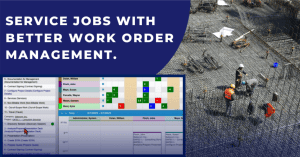Lauren Parsons- Oct. 26th, 2021
With the holidays approaching, now is the time to hire seasonal staff if you haven’t already. During busy seasons, businesses face higher demand, making an effective talent acquisition and recruitment process essential. Identifying which seasonal positions to fill and integrating temporary staff into your workflow can streamline hiring and boost profitability. Having the right number of qualified candidates helps manage workloads and maintain your employer brand as customer demands rise.
Think most seasonal jobs are only in tourism and hospitality? In reality, seasonal positions exist across many sectors. The top five industries for seasonal roles are engineering, IT, customer service, office support sales and manufacturing. These peak periods require flexible scheduling and strong workforce management to ensure your team can handle increased workloads without sacrificing quality or productivity.
Planning a seasonal hire? Here are six strategies to strengthen your talent pool and improve your hiring process for this season and beyond.
Develop a seasonal recruitment strategy
The busiest times for seasonal hiring are summer and winter. Most employers begin advertising open positions 1-3 months in advance, using job boards and social media platforms to reach candidates. Seasonal hiring should be part of your annual strategic planning, involving accounting, marketing, legal, payroll and executive teams to develop a recruitment strategy and assess hiring needs for each season. Focus on recruitment marketing, craft clear job descriptions and prepare an efficient application process to optimize hiring and enhance your employer brand.
Connect with your local chamber of commerce
Local chambers of commerce support businesses in finding seasonal and full-time employees. Connect with your local chamber to promote seasonal openings. Ask about online job boards or career fairs you can participate in. This broadens your talent pool and highlights your company culture, which appeals to seasonal candidates.
Use online resources to share your openings
Social media is transforming how recruiters and HR managers find talent. Use platforms like Facebook Jobs and LinkedIn to reach seasonal candidates. These channels expand your reach and help you fill positions efficiently. By leveraging multiple channels, including industry-specific job boards, you can target candidates who might not otherwise find your openings.
Consult your legal and HR team about benefits and local laws
Payroll and HR laws vary by state. According to SHRM, employers with 100 or more employees must provide benefits to those working more than 120 days in a calendar year. If a seasonal employee works longer than three months, they are considered full-time. Consult your legal and HR teams to determine if benefits are required for seasonal staff. Ensure your applicant tracking systems comply with local regulations to keep the hiring process efficient and transparent.
Host orientations and training workshops
Motivate seasonal employees and help them feel part of the team by hosting orientations and training for new hires. Educate them on your company mission, policies and procedures. Introduce key stakeholders and encourage questions. Offer ongoing training during their employment to ensure they are skilled in necessary software, security, safety and tasks. This investment in training supports retention and demonstrates your commitment to workforce management best practices.
Turn a seasonal hire into a full-time employee
Recruiters often identify standout seasonal employees who can return each season. Returning workers need less training and are already familiar with your company. Even if a former seasonal employee cannot return, they may refer friends or family who are a good fit. This approach strengthens your employer brand, builds a robust talent pipeline and maintains a reserve of qualified candidates for busy periods. For some companies, a successful seasonal hiring process can transition top performers into permanent roles.




